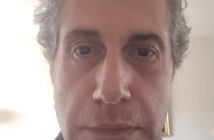Naturally, most Africans did not want to leave behind their old traditions. Resistance to conversion was met with terrible violence, so Africans already saddled with the horror of being a slave would also suffer extra depreciations because they wished to celebrate their native religion. A solution fell into place though, and this solution was nearly identical all across the Americas. The Africans would pretend to convert to Catholicism, and secretly continue their religious traditions under the guise of Christian worship. Catholic symbols, like the Eucharist and the Saints, came to have double meanings.
In Haiti and the Dominican Republic this new religion is called Vodou. In Cuba it is called Santeria and Palo Monte. In Brazil it is called Candomble. There are countless other permutations of this system throughout the Americas.
It remains to ask why this solution was so universally adopted by the Africans. The simple truth is that there is an impressive similarity between the cosmological structure of Roman Catholicism and Vodun.
Vodun recognizes a supreme deity. However, this god does not interact directly with humanity. Humans must rely on lesser celestial beings known as vodun. Chief among these are the orishas, creatures sometimes referred to as gods, though they are more like helpers and messengers for the supreme creator.
Roman Catholicism recognizes a supreme deity. However, this god does not often interact directly with humanity. Humans must rely on lesser celestial beings known as angels and saints. These creatures might appear as gods, though they are more like helpers and messengers for the supreme creator.
It was a simple matter of marrying the imagery of orishas (in Vodou they are referred to as loa) with saints and angels. Then it was simple to go to Church and pray to St. Patrick to invoke Dambala, or pray to St. Anthony to invoke Legba. There was also no need to change the structure of the supreme deity. Vodou does not reject the idea that the Christian god is any different than their supreme deity (however this does get murky when considering the Trinity). It is important to note that some Vodouisants from earlier periods have questioned whether or not the ‘white’ god that the slave masters worshipped was, in fact, the supreme god, because of all the evil it seemed to ask them to do.
This marriage of religions is now so complete that practitioners of Vodou will also call themselves followers of Roman Catholicism. The two religions, once at odds with one another, have become complimentary in the eyes of these Haitians. To worship in one mode is to worship in the other at the same time.




1 Comment
alex sharp:
interesting article. your observation that
—
“cases may be made that all modern religion is syncretic in nature, as it typically borrows elements from pre-existing religious traditions”
—
took me back to my undergrad days when i had a preoccupation with platonism.
we catholics often assume that our doctrine of apostolic succession ensures that our theology is (for lack of a more sophisticated theological description) completely unadulterated. but st. augustine–one of the fathers and patriarchs of our faith–was very much influenced by platonism and neoplatonism. so much so, that augustinian philosophy is often referred to as being “baptized platonism.” i remember reading somewhere that during the early renaissance (in florence, italy) there was a movement amongst catholic scholars to have plato canonized.
i know our non-christian roots go back much farther than plato (eg- pythagoras, orphic mythology), but one only needs to look at augstine for evidence of pagan influences.
i’ve always meant to read up on voodoo, but can’t muster up the attention span anymore. so, thanks for the apt and scholarly crash course.